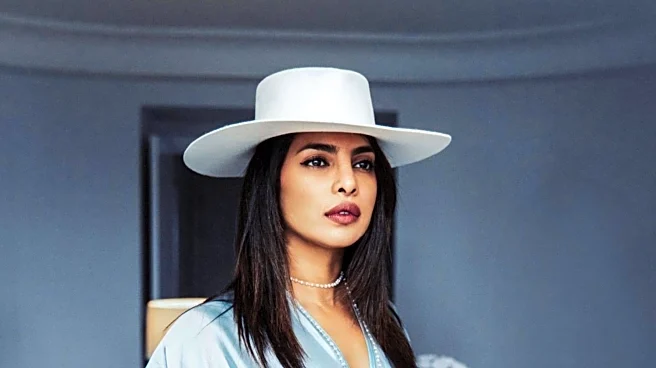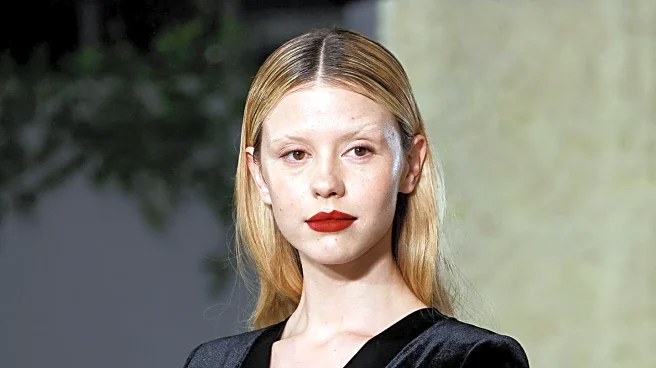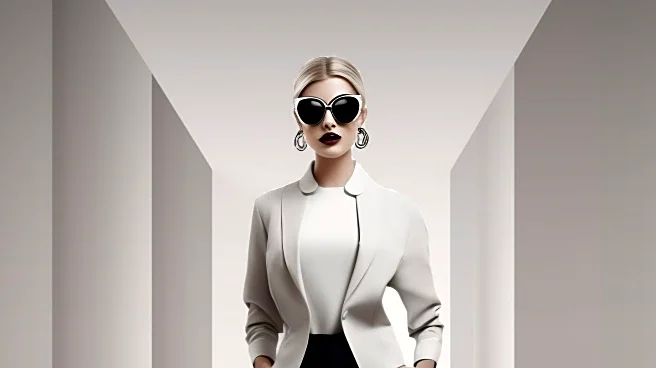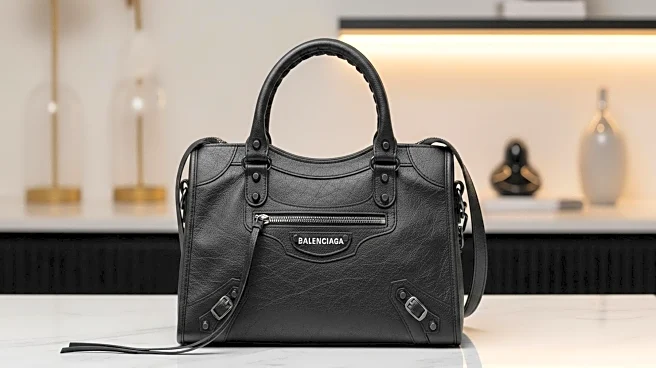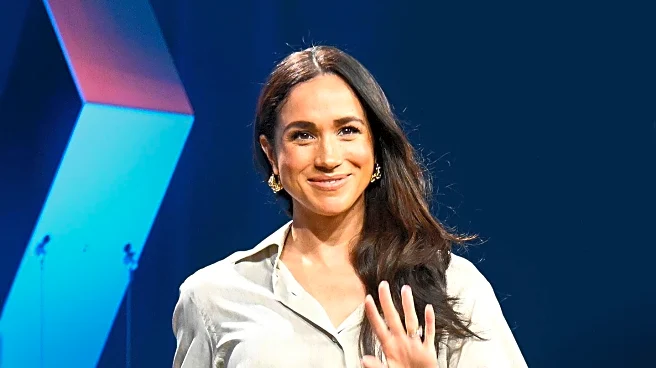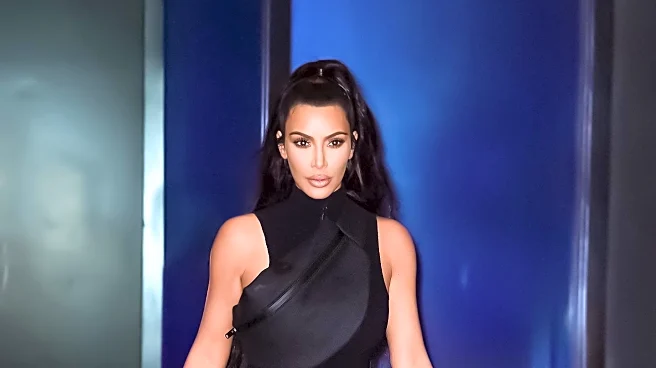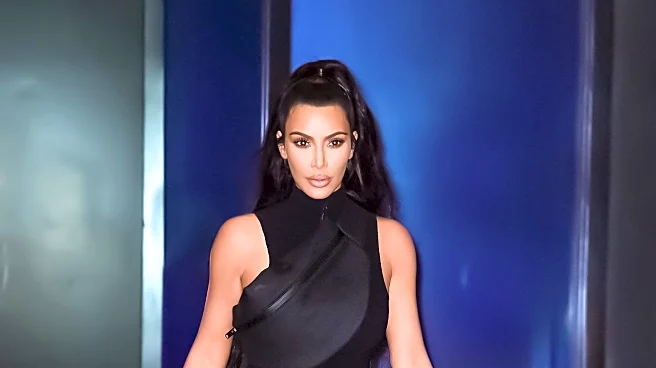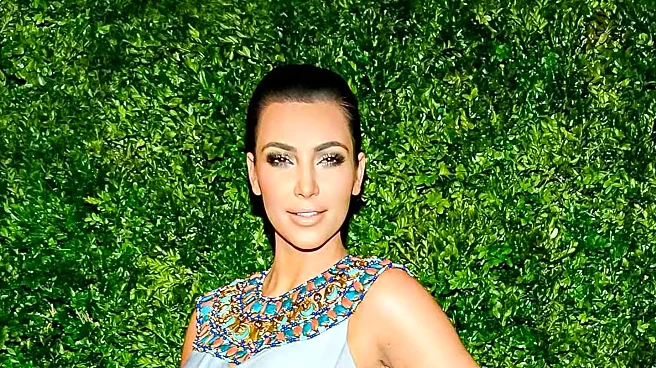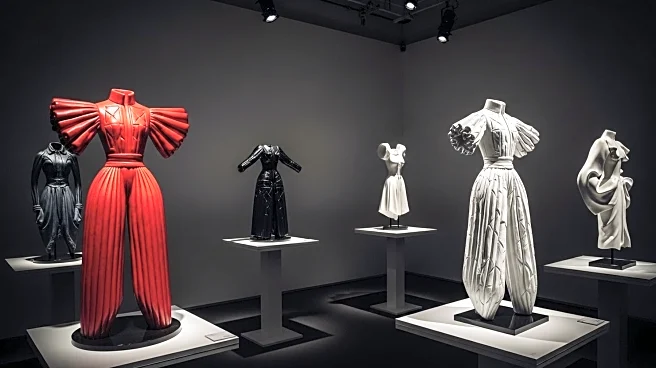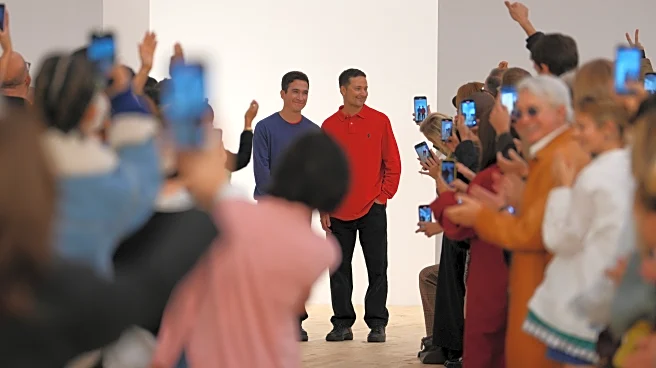What's Happening?
Vogue's weekly edition, Beauty Marks, has spotlighted significant beauty transformations seen during recent fashion weeks. As fashion month progresses through New York, London, Milan, and Paris, notable changes include Kim Kardashian's pixie cut and Emma Stone's return to her bob hairstyle. Outside of fashion events, Pamela Anderson has adopted a copper red hair color, while Amal Clooney embraced the 'toasted' makeup trend with bronzy glam at The Albies. These transformations reflect the evolving beauty trends that are set to influence the industry. In Milan, Dolce & Gabbana emphasized the classic feline eyeliner flick, while Prada saw a resurgence of hair gel. Paris showcased models with natural, self-enhancing makeup looks, particularly at Jonathan Anderson's Dior show.
Why It's Important?
The beauty transformations highlighted by Vogue are significant as they set the stage for upcoming trends in the beauty industry. These changes, seen on high-profile celebrities and during major fashion events, often dictate consumer preferences and influence product development. The focus on natural and self-enhancing looks suggests a shift towards authenticity and individuality in beauty standards. As these trends gain traction, they may impact the marketing strategies of beauty brands and the choices of consumers seeking to emulate celebrity styles.
What's Next?
As these beauty trends continue to unfold, they are likely to influence upcoming fashion and beauty campaigns. Brands may introduce new products that cater to the demand for natural and self-enhancing looks, while stylists and makeup artists may adopt these trends in their work. The impact of these transformations will be observed in future fashion events and media coverage, as industry professionals and consumers react to the evolving beauty landscape. The emphasis on individuality and authenticity may also lead to broader discussions about beauty standards and inclusivity.
Beyond the Headlines
The beauty transformations highlighted by Vogue may have deeper implications for the industry, challenging traditional norms and encouraging a shift towards more diverse and inclusive beauty standards. This change reflects broader cultural movements towards authenticity and self-expression, as individuals seek to define their own beauty narratives. The focus on natural and self-enhancing looks may resonate with those looking to break away from conventional beauty ideals and embrace their unique identities.

